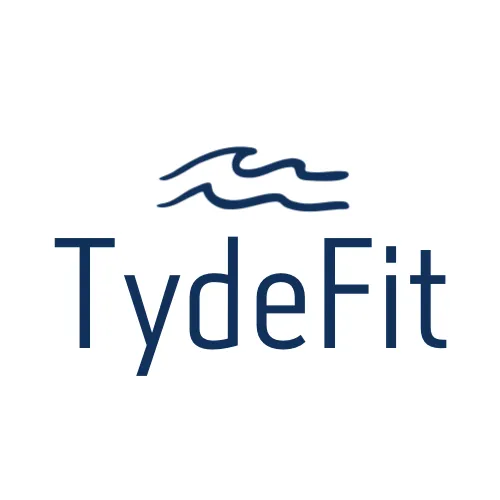Are you struggling to gain weight and build muscle? Do you feel like you’re constantly hitting a plateau in your workouts? If so, don’t worry – you’re not alone. Many people struggle with gaining weight and building muscle, but the good news is that there are effective weight gain workout plans that can help you achieve your goals.
In this article, I will introduce you to the basics of creating and understanding a weight gain workout plan that can help you pack on muscle and achieve the body you’ve always wanted. Whether you’re a beginner or an experienced gym-goer, this weight gain workout plan is designed to help you maximize your gains and build a strong, muscular physique. So if you’re ready to take your workouts to the next level and start seeing real results, keep reading to learn more about this effective weight gain workout plan.
Understanding Weight Gain
If you want to gain weight, you need to understand the basics of muscle hypertrophy, caloric surplus, macronutrients, and progressive overload.
Basics of Muscle Hypertrophy
Muscle hypertrophy is the process of increasing muscle size and strength. When you lift weights, you create micro-tears in your muscle fibers. Your body repairs these tears by fusing the muscle fibers together, which leads to muscle growth. To maximize muscle hypertrophy, you need to lift weights that are heavy enough to cause muscle damage but not so heavy that you can’t perform the exercise with proper form.
If you are already an expert in muscle hypertrophy, you could be interested in further research.
Caloric Surplus and Macronutrients
To gain weight, you need to consume more calories than you burn. This is known as a caloric surplus. However, not all calories are created equal. You need to focus on consuming the right macronutrients: protein, carbohydrates, and fats. Protein is essential for muscle growth and repair. Carbohydrates provide energy for your workouts. Fats help regulate hormones and provide energy. A balanced diet that includes all three macronutrients is essential for weight gain.
Importance of Progressive Overload
Progressive overload is the gradual increase of stress placed on the body during exercise. This can be achieved by increasing the weight, reps, or sets of an exercise over time. Progressive overload is essential for muscle growth because it forces your body to adapt to the increased stress. Without progressive overload, your progress will plateau.
Nutrition for Weight Gain

If you’re looking to gain weight, it’s important to focus on both your workout routine and your nutrition. In this section, we’ll go over some important nutrition tips to help you reach your weight gain goals.
On a side note: I personally believe that nutrition is, at least in comparison to exercise, underrated. You should not forget that nutrition is a huge factor in the success of your weight gain goals.
Meal Planning
When it comes to meal planning for weight gain, it’s important to focus on consuming more calories than you burn. This means eating more than your body needs to maintain its current weight. A good rule of thumb is to aim for a calorie surplus of around 500 calories per day.
To achieve this, you’ll want to focus on consuming calorie-dense foods like nuts, seeds, avocados, and whole grains. You’ll also want to make sure you’re getting enough protein to support muscle growth. Good sources of protein include lean meats, eggs, dairy, and plant-based sources like beans and tofu.
Here’s an example meal plan for weight gain:
| Meal | Food |
|---|---|
| Breakfast | 3-4 eggs, 2 slices of whole-wheat toast with nut butter, bowl of fruit, glass of milk |
| Snack | Handful of nuts and dried fruit |
| Lunch | Grilled chicken breast or thigh, broccoli, a cup or more of brown rice with olive oil and nuts |
| Snack | Protein shake with banana and peanut butter (you can read about it here) |
| Dinner | Baked salmon, sweet potato, green beans |
| Snack | Greek yogurt with honey and berries |
Supplementation
While it’s possible to get all the nutrients you need from a healthy diet, some people find it helpful to supplement with protein powder, creatine, or other supplements. However, it’s important to remember that supplements should never replace a healthy, balanced diet.
If you do decide to supplement, make sure to choose high-quality products from reputable brands. Talk to your doctor or a registered dietitian before starting any new supplements.
Hydration
Staying hydrated is important for overall health and can also help support weight gain. Aim to drink at least 8-10 glasses of water per day, and consider adding in other hydrating beverages like coconut water or herbal tea.
Avoid sugary drinks like soda or sports drinks, as these can add unnecessary calories without providing much nutritional benefit.
Personally, I am a big fan of mineral water and prefer it over tap water. You can cover a good amount of your micronutrient needs by drinking mineral water, which in turn saves you money on supplements that you would otherwise have to buy.
Weight Gain Workout Plan Fundamentals
If you’re looking to gain weight and build muscle, a well-designed workout plan is essential. In this section, we’ll cover the fundamentals of creating an effective weight gain workout plan.

Split Routines vs. Full-Body Workouts
When it comes to weight gain workout plans, there are two main options: split routines and full-body workouts.
Split routines involve dividing your workouts into different muscle groups, with each muscle group trained on a different day. This allows for more focused training on each muscle group and can lead to greater muscle growth over time.
Full-body workouts, on the other hand, involve training all major muscle groups in a single workout. This can be a good option for beginners or those with limited time, as it allows for more frequent training of each muscle group.
Exercise Selection
The exercises you choose for your weight gain workout plan can have an influence on your results. Compound exercises that work multiple muscle groups at once, such as squats, deadlifts, and bench press, are generally considered the most effective for building muscle and gaining weight.
In addition to compound exercises, it’s important to include isolation exercises that target specific muscle groups. This can help to ensure balanced muscle development and prevent muscle imbalances.
Volume and Intensity
To build muscle and gain weight, you need to challenge your muscles with enough volume and intensity. Volume refers to the total amount of work you do in a workout, while intensity refers to how heavy the weights you’re lifting are.
For weight gain, it’s generally recommended to aim for higher volumes of work, with sets of 8-12 reps per exercise. As you progress, you can gradually increase the weight you’re lifting to maintain intensity.
Rest and Recovery
Finally, rest and recovery are crucial components of any weight gain workout plan. Your muscles need time to recover and repair after a workout, so it’s important to allow for adequate rest days between workouts.
In addition to rest days, proper nutrition and sleep are also important for recovery and muscle growth. Be sure to eat a diet rich in protein and other nutrients, and aim for 7-9 hours of sleep per night.
On a personal note: If you’re really eager to stick to your weight gain workout plan but feel like you’re getting sick, it’s important not to overstrain your body by going to the gym. There’s a high chance it will do more harm than good.
Sample Workout Schedules
Are you ready to start your journey with a weight gain workout plan? Here are some sample workout schedules to help you get started.

Beginner Workouts
If you are new to weightlifting, it’s important to start with a beginner workout plan. This will help you build a solid foundation and prevent injuries. Here’s an example of a beginner workout plan:
| Day | Workout |
|---|---|
| Monday | Chest, Triceps |
| Tuesday | Back, Biceps |
| Wednesday | Rest |
| Thursday | Legs |
| Friday | Shoulders, Abs |
| Saturday | Rest |
| Sunday | Rest |
For each workout, perform 3 sets of 10-12 reps for each exercise. Start with lighter weights and gradually increase the weight as you get stronger.
Intermediate Workouts
If you have been lifting weights for a while and are ready to take your workouts to the next level, an intermediate workout plan may be right for you. Here’s an example of an intermediate workout plan:
| Day | Workout |
|---|---|
| Monday | Chest, Triceps |
| Tuesday | Back, Biceps |
| Wednesday | Legs |
| Thursday | Shoulders, Abs |
| Friday | Rest |
| Saturday | Arms |
| Sunday | Rest |
For each workout, perform 4 sets of 8-10 reps for each exercise. Make sure to challenge yourself with heavier weights and more complex exercises.
Advanced Workouts
If you are an experienced weightlifter looking for a challenging workout plan, an advanced workout plan may be right for you. Here’s an example of an advanced workout plan:
| Day | Workout |
|---|---|
| Monday | Chest, Triceps |
| Tuesday | Back, Biceps |
| Wednesday | Legs |
| Thursday | Shoulders, Abs |
| Friday | Arms |
| Saturday | Full Body |
| Sunday | Rest |
For each workout, perform 4-5 sets of 6-8 reps for each exercise. Use heavy weights and incorporate advanced exercises such as supersets and drop sets to challenge yourself.
Remember to always warm up before each workout and cool down afterwards. And most importantly, listen to your body and don’t push yourself too hard. With dedication and consistency, you will see results in no time.
I really want to emphasize, that if your body tells you that it doesn’t feel good (for example by having you feel pain), it probably isn’t a good thing for your body.
Exercise Demonstrations
If you’re looking to gain weight and build muscle, it’s essential to have a workout plan that includes both compound and isolation movements. Compound exercises work multiple muscle groups at once, while isolation exercises target specific muscles. In this section, we’ll cover some exercise demonstrations for both types of movements, as well as proper form and technique.
Compound Movements
Compound movements are essential for building overall strength and mass. These exercises require the use of multiple muscle groups and are typically performed with heavier weights. Some examples of compound movements include:
- Squats: Squats are a great way to build lower body strength and mass. They work your quads, hamstrings, glutes, and lower back. When performing squats, make sure to keep your feet shoulder-width apart and your knees aligned with your toes. Keep your back straight and lower your body until your thighs are parallel to the ground.
- Deadlifts: Deadlifts are another excellent compound exercise that works your entire body. They primarily target your hamstrings, glutes, and lower back. When performing deadlifts, make sure to keep your feet shoulder-width apart and grip the bar with an overhand grip. Keep your back straight and lift the bar off the ground until you’re standing up straight.
Isolation Movements
Isolation movements are essential for targeting specific muscle groups and building definition. These exercises are typically performed with lighter weights and higher reps. Some examples of isolation movements include:
- Bicep Curls: Bicep curls are a classic isolation exercise that targets your biceps. When performing bicep curls, make sure to keep your elbows close to your body and curl the weight up towards your chest.
- Tricep Extensions: Tricep extensions are another great isolation exercise that targets your triceps. When performing tricep extensions, make sure to keep your elbows close to your head and extend the weight back behind you.
Proper Form and Technique
Proper form and technique are essential for preventing injury and getting the most out of your workouts. When performing any exercise, make sure to start with a weight that you can comfortably handle and gradually increase the weight over time. Always keep your back straight and avoid jerking or swinging the weight.
In conclusion, incorporating both compound and isolation movements into your workout plan, along with proper form and technique, is crucial for gaining weight and building muscle.
Tracking Progress
When embarking on a weight gain workout plan, it is important to track your progress to ensure that you are making gains and to identify areas where you may need to make adjustments. There are various metrics you can use to track your progress, including monitoring your weight and body measurements, as well as tracking your strength and performance metrics.

Monitoring Weight and Body Measurements
One of the most straightforward ways to track your progress is by monitoring your weight and body measurements. By regularly weighing yourself and measuring your body, you can get a sense of whether you are making progress towards your weight gain goals. It’s important to note that weight can fluctuate due to factors such as water retention, so it’s important to look at trends over time rather than focusing on day-to-day changes.
In addition to weighing yourself, you can also track your body measurements, such as your waist circumference, arm circumference, and chest circumference. By measuring these areas regularly, you can get a sense of whether you are gaining muscle mass in these areas.
Strength and Performance Metrics
Another way to track your progress is by monitoring your strength and performance metrics. This can include tracking the amount of weight you are lifting for various exercises, as well as tracking the number of reps and sets you are doing. By gradually increasing the weight you are lifting and the number of reps you are doing, you can ensure that you are making progress towards your strength and muscle gain goals.
You can also track your performance in specific exercises, such as push-ups or pull-ups. By tracking the number of reps you can do in a set amount of time, you can get a sense of whether you are making progress towards your performance goals.
Overall, tracking your progress is an important part of any weight gain workout plan. By monitoring your weight, body measurements, and strength and performance metrics, you can ensure that you are making gains and identify areas where you may need to make adjustments to your workout plan.
Common Challenges and Solutions
When it comes to gaining weight, there are many challenges that you may face along the way. Here are some common challenges and solutions that can help you stay on track with your weight gain workout plan.
Plateaus and How to Overcome Them
One of the biggest challenges you may face when trying to gain weight is hitting a plateau. This is when you stop seeing results despite sticking to your workout plan. To overcome a plateau, you need to make some changes to your routine.
First, consider increasing the weight you are lifting. This will help you challenge your muscles and stimulate growth. You can also try changing up your exercises to target different muscle groups. For example, if you’ve been doing the same bicep curls for weeks, switch to hammer curls or preacher curls.
Another way to overcome a plateau is to increase your calorie intake. If you’ve been eating the same amount of food every day, your body may have adapted to the increased calories and stopped gaining weight. Try adding an extra 500 calories to your diet each day to jumpstart your weight gain again. You can also try to shift your macro intake in a way to consume more protein.
If you want to read some difficult expert-level knowledge about protein intake you can go right here.
Injury Prevention and Management
Injuries can be a major setback when trying to gain weight. To prevent injuries, make sure you warm up properly before each workout and stretch after each workout. This can help prevent muscle strains and other injuries.
If you do get injured, it’s important to take time off to recover. Continuing to work out with an injury can make it worse and prolong your recovery time. Instead, focus on other areas of your body that are not injured and try to maintain your weight until you are fully recovered.
When you are ready to return to your weight gain workout plan, start slowly and gradually increase the intensity of your workouts. This will help prevent re-injury and allow you to continue making progress towards your weight gain goals.
By overcoming plateaus and preventing injuries, you can stay on track with your weight gain workout plan and achieve your goals. Remember to listen to your body and make adjustments as needed to ensure you are making progress safely and effectively.
What is the best workout routine for weight gain?
The best workout routine for weight gain is one that focuses on muscle hypertrophy through compound exercises like squats, deadlifts, and bench press, and includes adequate volume and intensity. This routine should also be paired with a caloric surplus and a balanced diet rich in protein, carbohydrates, and fats.
Which type of exercise is best for weight gain?
The type of exercise best for weight gain is compound movements that work multiple muscle groups, such as squats, deadlifts, bench press, and overhead presses. These exercises are effective for building overall muscle mass.
What workout gains most weight?
The workout that gains the most weight is one that includes progressive overload with compound exercises, ensuring sufficient volume and intensity to stimulate muscle growth. This should be combined with proper nutrition to support muscle repair and growth.
How can I bulk up in 4 weeks?
To bulk up in 4 weeks, focus on a workout routine that includes a mix of compound and isolation exercises, with a rep range of 8-12 for higher volume. Ensure progressive overload by gradually increasing the weight or reps. Alongside the workouts, consume a caloric surplus with a focus on protein and other macronutrients for muscle building, and allow for adequate rest and recovery. A consistent routine, proper nutrition, and sufficient sleep are key factors in gaining muscle mass in a short time frame.
If you liked this article, or even if you didn’t, please consider leaving your feedback below.
For a continuous stream of creative ideas, be sure to follow us on Pinterest.





